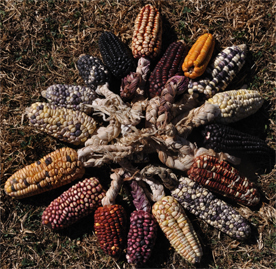“mass destruction, the geopolitic of hunger” or “Man’s head draught”?
November 1st, 2011Jean Ziegler just published “the geopolitic of famine”.
As International civil servant and consultant, Mr Ziegler is a good man trying to keep the world famine in focus of the rich countries.
These experts have done so all their life in the XXth century, while famine reached its utmost record level, spreading in their own country. Today they indignate themselves without putting to trial their own responsability.
Jean Ziegler takes for example the Bambara peasant in Mali, who gets a 100 time less wheat crop than in Ohio. For Ziegler it comes from the lack of fertilizer.
Ziegler has the reflexes of his century, but I’m afraid the problem relies elsewhere. The problem is ideological, brought by westernized agronomic engineers who try to contamitate the spirit of peasants they consirder uncult, without trying to find out local solutions. Tilling the soil and spraying it with fertilizers, is just like supporting “hydroponic” agriculture : to apply the same formula without giving a damn to the local richness of the soil. Agriculture and nature is not at all approached, under its’ scientific side, but with all the ideology needed to sell more fertilizers from the rich countries.
All that to grow wheat, an international market monoculture, while the aim is to make food localy… For this purpose wheat can be considered as a starvation crop in comparison to amaranth 3 times more nutritiv… without speaking of all the local and varied alternativs.
If they need fertilizers they have termite soil : termites digest together with the mycelium they crop, all the organic matter to make the most complex sugars which are considered as the richest fertilizer on earth. In temperate countries we have lombric compost, in Africa we have termite compost. But beware it is extremely powerfull. To much of it kills, like too much luxury. You need to control the amount by watching the biodindicator plants to be sure not to produce nitrites and aluminites which will contaminate your food and which are the cause in Europe of nervous syndroms as Alzheimer’s, multiple sclerosis, etc. Unless you want to develop a drug industry to remediate your foul doings, and make more money.
Remember also that the chemical fertilizers are mostly salts. They already have a desert why do you want to ad salt to their fate. The crucial problem for the Bambara in Mali is climate change,with the access to water.
Here the proble is more ignorance than drought : “Man’s head drought” as they say in Mali.
But water should not be a problem today. At SOS SOiL, Alain Gachet with his reading of the NASA’s radar satellite images, has find the sustainable table water for the Darfour refugees. These water tables are a real kick for agriculture… But the agronomic exploitors use it to plant their GMO seeds and spread their chemistry… Most of the plans for aid for Africa to fight famine art the last Copenhagen Conference, where trials in big of manipulated seeds forbidden in the North.
Mr Ziegler, I know you are a good man. It maybe time to draw conclusions in the thinking process you are using : it is a good thing to indignate yourself just before retiring. It could be more wise to switch methods, instead of promoting machinery, chemistry and hard work to develop the poor man’s agriculture. Look for more sustainable plans nourrished by local ressources, creativity and permanent soil cultivation and self enrichment : a smarter agriculture.
This especially for someone who has dedicated his life to development in a time when malnutrition raised by 1000. It is time to open new trails, instead of trying to justify old lost crusades. Remember people are starving as you talk.
Dont see any polemic n this post : by speaking of Ziegler I speak about hunger and the fight against it. Plato who knew Anaxamander, the first guy to calculate the circumference of the earth when everybody thought it was flat, 600 years BC, Plato nether spoke about him, to avoid any publicity he could give him. To ignore Anaxamander was a way to kill the theory of a round planet turning arounf the sun, in the egg. By doing so, Plato killed Giordano Bruno .
